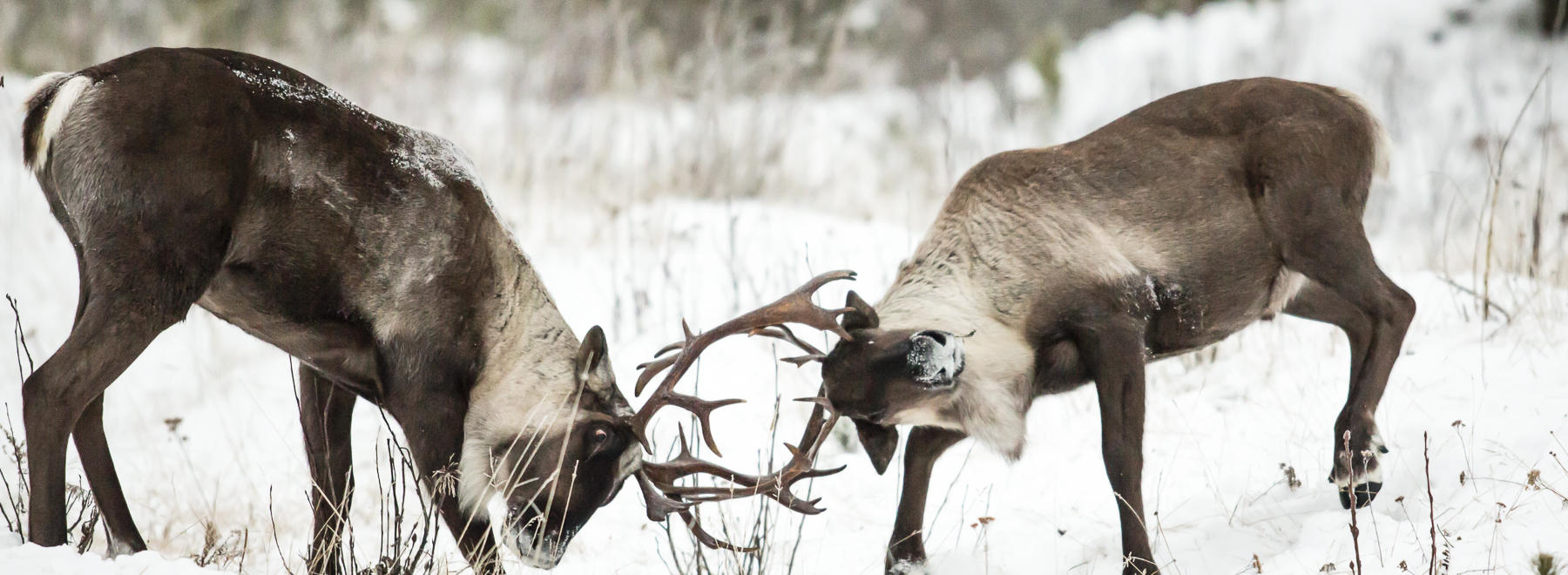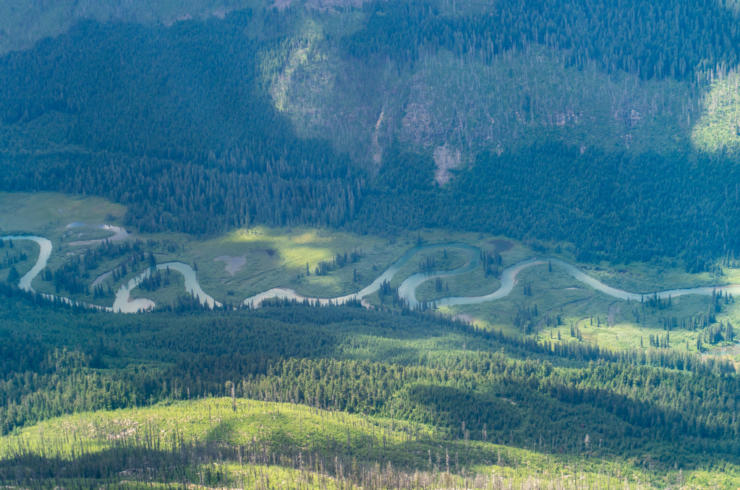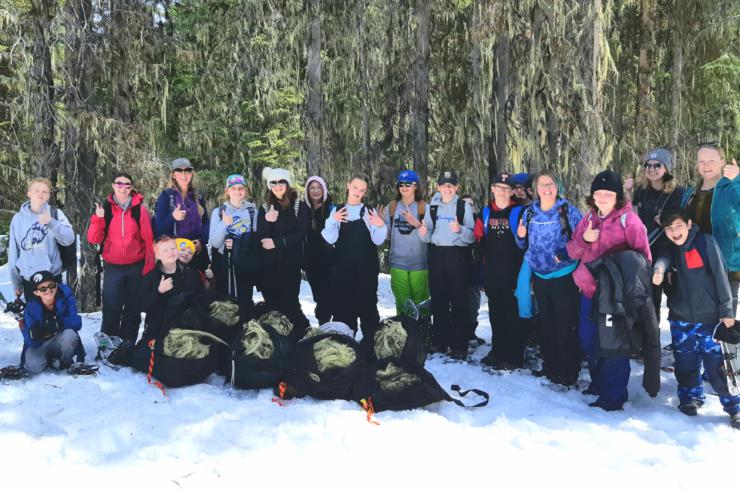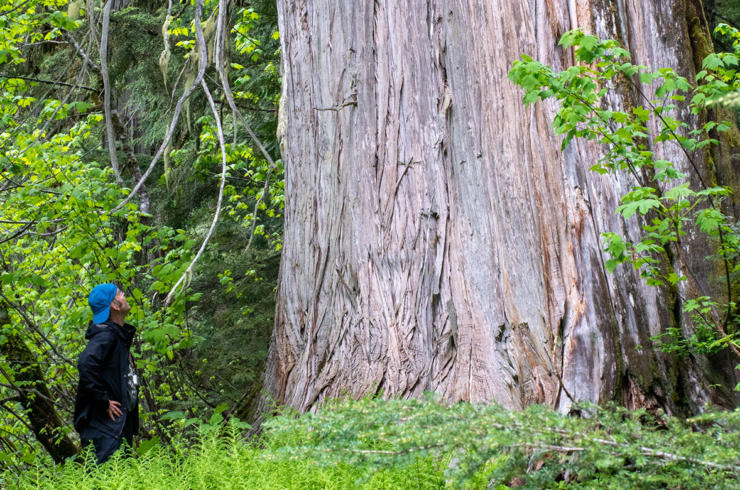SCIENTIFIC NAME: Ecotype of rangifer tarandus caribou (woodland caribou)
OTHER NAMES: Naxni (Ktunaxa) | Selcwéycen (Secwépemc) | Styiɬcʼʔ (Syilx) | Whudzih (Lheidli T’enneh)
STATUS: Critically imperilled, Endangered (COSEWIC), Threatened (SARA), Red-listed (BC CDC)
Southern mountain caribou in British Columbia
Southern mountain caribou have been part of British Columbia’s landscape since the last ice age over 10,000 years ago, and they’ve evolved to thrive in the province’s wet, mountainous forests. This species is found only in B.C. and Alberta, although one sub-population also ranges into Idaho and Washington.
The Kootenay and Columbia region is home to the two most southerly mountain caribou herds in the province: the Central Selkirk and Columbia North herds. All seven other herds in this region have been declared locally extinct over the last two decades.
Southern mountain caribou numbers in B.C.’s Inland Temperate Rainforest have been steadily declining — from approximately 2,500 in the late 1990s to 1,250 today1.
What may have once been a single, large mountain caribou population is now fragmented into as many as 18 sub-populations that have little-to-no interactions with one another.

This ecotype (a genetically distinct geographic variety) of woodland caribou migrates throughout the season, moving up and down mountainsides to find food and evade predators. Our southern mountain caribou occupy valley floors in spring and fall, and move to high-elevation forests in winter and summer.
Threats to southern mountain caribou
Habitat loss, degradation and fragmentation from logging, particularly old-growth logging, are the largest contributors to the decline of our southern mountain caribou.
There’s also some evidence that heli-skiing2, snowmobiling 3, and other human-based recreation can displace caribou, increase stress and energy expenditure, and force animals into lower value and more avalanche-prone habitats.
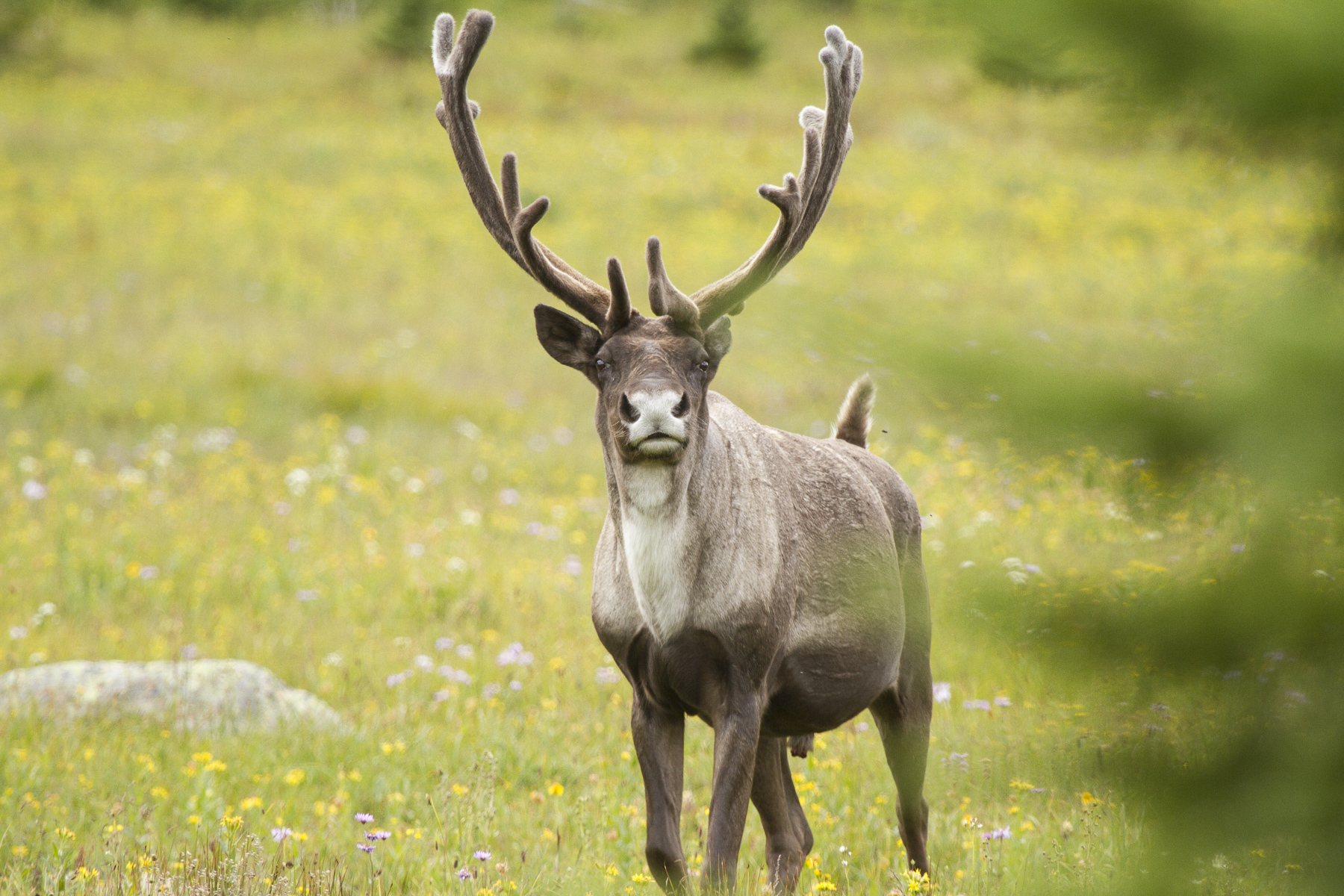
Why are old growth forests so important for caribou?
B.C.’s southern mountain caribou depend on old-growth forests for several reasons. In winter, when other food is buried, they stand with huge snowshoe-like feet on top of the snow to feed on lichens growing on the branches of old-growth trees — hence why they are sometimes called ‘deep-snow caribou’.
In late fall/early winter, caribou occupy low-elevation forests, where the thick canopies of old hemlock and cedar trees reduce the amount of snow on the forest floor. Here, caribou are able to paw through the snowpack to find food such as falsebox, an evergreen shrub.
Old-growth forests typically contain fewer prey species than young forests. Mature forests also have better sightlines to detect predators, due to the low density and broad spacing of trees. In contrast, predators can hunt more easily in logging areas by traveling along forestry roads. Clearcuts and young forests are also highly suitable for other ungulates — causing deer, moose and elk to move into the area. This draws in more predators like wolves and cougars 4, which end up predating on caribou as well.

Despite the perilous state of our remaining southern mountain caribou herds, logging continues to occur in critical southern mountain caribou habitat. In 2014, the federal government released its southern mountain caribou recovery strategy, which recommended limiting disturbance to critical caribou habitat. In the five years after the strategy was released, more than 90,900 hectares — an area equivalent to over 227 times the size of Vancouver’s Stanley Park / 727 times the size of downtown Ottawa — of critical caribou habitat was logged in B.C.
Today, only one third of the Columbia North herd’s core habitat is protected, despite the federal recovery plan recommending that all of the herd’s core habitat be protected.
In the meantime, the provincial government has continued to approve and try to auction off numerous cutblocks that overlap with the herd’s range.
What is Wildsight doing?
Wildsight has advocated for increased caribou protections for more than 30 years. Currently, we’re pushing for habitat protections for the last two remaining herds in the region: the Columbia North and Central Selkirk herds. We also work alongside First Nations and other organizations to defend southern mountain caribou from a variety of threats.
Some of this work has included:
- Halting logging in critical caribou habitat in Argonaut Creek and the Seymour River.
- Fieldwork, forestry reviews and information sharing with Indigenous Nations to support decision-making, including reviewing cutblocks, roads and forest development plans, identifying biodiversity priority areas, ground truthing, and technical analysis.
- Longstanding fieldwork projects assessing forests for high conservation values such as caribou habitat and rare plant species.
- Running educational and lichen collection events to help supply caribou maternity pens with food over the winter.
- In 2014, we won a lawsuit forcing the federal government to map critical habitat for at-risk species and release corresponding recovery strategies. This included the release of the 2014 Recovery Strategy for Southern Mountain Caribou.
- Advocating for the Mountain Caribou Recovery Plan which was legislated in 2007, protecting more than 2.2 million hectares from logging and associated road building.
Take action
We’re calling on Canada and B.C. to protect southern mountain caribou habitat in B.C. and save our last deep-snow herds. Use our pre-written letter to add your voice to the movement.
B.C. has the power to issue an interim moratorium on logging and road building in all core southern mountain caribou habitat. This would buy time for critical habitat mapping to be completed and publicly released, and permanent protections to be put in place for 100% of the Southern Group’s (see fast facts below) core habitat. For that to happen, politicians need to be aware of the will of the people, both in B.C. and across the country. Will you join us in calling for change?
Quick facts
- On average, southern mountain caribou weigh 110-210 kilograms.
- They have large, dinner-plate sized hooves and big, widely-spaced dew claws that allow them to stay on top of and dig through snow for lichens.
- Both males and females have antlers, and females shed their antlers later in the season than males. Scientists suspect this may give them an advantage during calving to find more food.
- Reproductive rates are lower than most ungulates — females cannot reproduce until three years of age, and typically only birth one calf per year.
- Mountain caribou are known for a clicking sound that occurs every time they take a step, because of a certain tendon in their ankles.
- Arctic caribou and reindeer can see in a different wavelength (UV light), enabling them to see terrestrial lichens under the snow. Southern mountain caribou may be capable of the same!
Find out more by reading the Mountain Caribou Education Booklet.
- Government of BC’s ‘Mountain Caribou Recovery Implementation Plan‘ (2009)
- ‘Movement ecology of endangered caribou during a COVID-19 mediated pause in winter recreation’ (2023)
- ‘Motorized backcountry recreation and stress response in Mountain Caribou’ (2008)
- ‘The impact of forest harvesting on caribou–moose–wolf interactions decreases along a latitudinal gradient‘ (2016)


